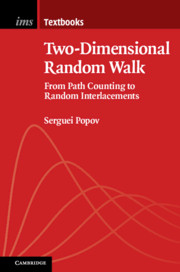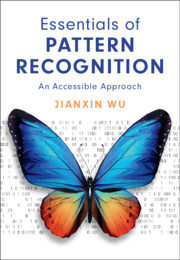Refine search
Actions for selected content:
52383 results in Statistics and Probability
Policy priority inference: A computational framework to analyze the allocation of resources for the sustainable development goals
-
- Journal:
- Data & Policy / Volume 2 / 2020
- Published online by Cambridge University Press:
- 11 December 2020, e17
-
- Article
-
- You have access
- Open access
- HTML
- Export citation
DRAT: Data risk assessment tool for university–industry collaborations
-
- Journal:
- Data-Centric Engineering / Volume 1 / 2020
- Published online by Cambridge University Press:
- 11 December 2020, e17
-
- Article
-
- You have access
- Open access
- HTML
- Export citation
A CUMULATIVE RESIDUAL INACCURACY MEASURE FOR COHERENT SYSTEMS AT COMPONENT LEVEL AND UNDER NONHOMOGENEOUS POISSON PROCESSES
-
- Journal:
- Probability in the Engineering and Informational Sciences / Volume 36 / Issue 2 / April 2022
- Published online by Cambridge University Press:
- 11 December 2020, pp. 294-319
-
- Article
- Export citation
Using a stochastic economic scenario generator to analyse uncertain superannuation and retirement outcomes
-
- Journal:
- Annals of Actuarial Science / Volume 15 / Issue 3 / November 2021
- Published online by Cambridge University Press:
- 10 December 2020, pp. 549-566
-
- Article
- Export citation

Two-Dimensional Random Walk
- From Path Counting to Random Interlacements
-
- Published online:
- 09 December 2020
- Print publication:
- 18 March 2021
Quarantine and the risk of COVID-19 importation
-
- Journal:
- Epidemiology & Infection / Volume 148 / 2020
- Published online by Cambridge University Press:
- 09 December 2020, e298
-
- Article
-
- You have access
- Open access
- HTML
- Export citation
Time to Rt < 1 for COVID-19 public health lockdown measures
-
- Journal:
- Epidemiology & Infection / Volume 148 / 2020
- Published online by Cambridge University Press:
- 09 December 2020, e301
-
- Article
-
- You have access
- Open access
- HTML
- Export citation
Characterization of a hospital-based gastroenteritis outbreak caused by GII.6 norovirus in Jinshan, China
-
- Journal:
- Epidemiology & Infection / Volume 148 / 2020
- Published online by Cambridge University Press:
- 09 December 2020, e289
-
- Article
-
- You have access
- Open access
- HTML
- Export citation
‘Evidence for waterborne origin of an extended mixed gastroenteritis outbreak in a town in Northern Greece, 2019’
-
- Journal:
- Epidemiology & Infection / Volume 149 / 2021
- Published online by Cambridge University Press:
- 09 December 2020, e83
-
- Article
-
- You have access
- Open access
- HTML
- Export citation

Essentials of Pattern Recognition
- An Accessible Approach
-
- Published online:
- 08 December 2020
- Print publication:
- 19 November 2020
-
- Textbook
- Export citation
Quantifying the effects of passenger-level heterogeneity on transit journey times
-
- Journal:
- Data-Centric Engineering / Volume 1 / 2020
- Published online by Cambridge University Press:
- 07 December 2020, e15
-
- Article
-
- You have access
- Open access
- HTML
- Export citation
Imitation, network size, and efficiency
-
- Journal:
- Network Science / Volume 9 / Issue 1 / March 2021
- Published online by Cambridge University Press:
- 04 December 2020, pp. 123-133
-
- Article
- Export citation
2 - Probabilistic Programs as Measures
-
-
- Book:
- Foundations of Probabilistic Programming
- Published online:
- 18 November 2020
- Print publication:
- 03 December 2020, pp 43-74
-
- Chapter
-
- You have access
- Open access
- Export citation
List of Contributors
-
- Book:
- Foundations of Probabilistic Programming
- Published online:
- 18 November 2020
- Print publication:
- 03 December 2020, pp vii-x
-
- Chapter
-
- You have access
- Open access
- Export citation
1 - Semantics of Probabilistic Programming: A Gentle Introduction
-
-
- Book:
- Foundations of Probabilistic Programming
- Published online:
- 18 November 2020
- Print publication:
- 03 December 2020, pp 1-42
-
- Chapter
-
- You have access
- Open access
- Export citation
Preface
-
- Book:
- Foundations of Probabilistic Programming
- Published online:
- 18 November 2020
- Print publication:
- 03 December 2020, pp xi-xiv
-
- Chapter
-
- You have access
- Open access
- Export citation
15 - Programming Unreliable Hardware
-
-
- Book:
- Foundations of Probabilistic Programming
- Published online:
- 18 November 2020
- Print publication:
- 03 December 2020, pp 533-568
-
- Chapter
-
- You have access
- Open access
- Export citation
4 - On Probabilistic λ-Calculi
-
-
- Book:
- Foundations of Probabilistic Programming
- Published online:
- 18 November 2020
- Print publication:
- 03 December 2020, pp 121-144
-
- Chapter
-
- You have access
- Open access
- Export citation
8 - Quantitative Analysis of Programs with Probabilities and Concentration of Measure Inequalities
-
-
- Book:
- Foundations of Probabilistic Programming
- Published online:
- 18 November 2020
- Print publication:
- 03 December 2020, pp 259-294
-
- Chapter
-
- You have access
- Open access
- Export citation
13 - Luck: A Probabilistic Language for Testing
-
-
- Book:
- Foundations of Probabilistic Programming
- Published online:
- 18 November 2020
- Print publication:
- 03 December 2020, pp 449-488
-
- Chapter
-
- You have access
- Open access
- Export citation
